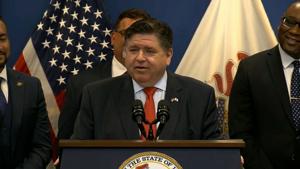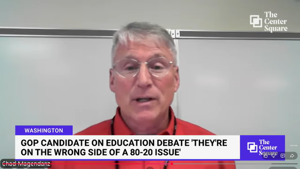WATCH: Republican leader: says Pritzker budget cut EO a ploy for IL tax increases
(The Center Square) – Gov. J.B. Pritzker blames President Donald Trump for ordering Illinois state agencies to find 4% budget cuts. A Republican leader offers suggested cuts but warns the move is a smokescreen for tax increases.
Pritzker issued the budgeting executive order Tuesday.
“I’m taking executive action to mitigate the impact of Trump’s economic policies on our state finances, maintain critical services, and preserve our economic stability,” Pritzker said in a news release.
Pritzker’s office said the order will have state agencies conduct immediate budget reviews to identify efficiencies and reductions, identify up to 4% of General Funds appropriations for fiscal year 2026 reserves to reinforce state finances, limit non-essential spending, purchases and travel, review all hiring decisions and prioritize only essential roles and propose programmatic changes or appropriation transfers if fiscal 2026 budget shortfalls emerge.
At an unrelated event Tuesday, Pritzker blamed Trump for the state having to restrain spending.
“By the policies of the big ugly bill, the policies of his administration, there are hundreds of millions of dollars that are going to have to be made up for as a result of the cuts that he is making,” Pritzker said.
Pritzker said Trump administration cuts will hit Illinois as early as this year.
“And then, of course, going into FY27, there are going to be severe effects upon the state budget and that’s going to be yet another conversation,” Pritzker said.
Illinois House Minority Leader Tony McCombie, R-Savanna, gave Pritzker ideas where to cut.
“How about, let’s not spend $2.3 billion on health care for illegal immigrants,” McCombie told The Center Square. “That’s not even touching what we spend on the increase of costs in our schools or for housing or other wraparound programs that they are qualifying for.”
McCombie said Pritzker blaming Trump and not Democratic policies impacting the economy is a smokescreen for more tax increases.
“Whether it’s for transit, whether it’s for more pork projects and or, God forbid, the failing energy policies that continue to plague Illinois,” McCombie said.
Illinois Senate Minority Leader John Curran, R-Downers Gove, said the state needs to cut spending regardless of who’s president, and Pritzker should restrain spending, lower taxes and improve economic opportunity.
“When President Biden was in the White House, the Governor’s own five-year budget projections showed average annual budget deficits of $4.6 billion over the next five years,” Curran said in a statement. “Yet, he continued to increase state spending by 40% since taking office, despite Illinois’ GDP significantly lagging behind national growth.”
Curran said if Pritzker is serious about the state’s fiscal solvency, he would make “the difficult, and sometimes unpopular decisions needed to constrain state spending, reduce taxes, and improve economic opportunity for all Illinoisans, regardless of who is president.”
Records show discretionary spending by Illinois state leaders has increased more than $16 billion since Pritzker became governor nearly seven years ago.
Latest News Stories
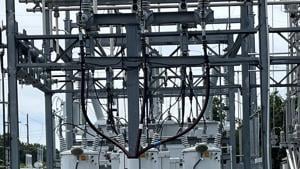
Battery storage financials remain in question as lawmakers consider energy omnibus

Illinois quick hits: Pritzker praises credit upgrade; Cook County approves $20M quantum grant

Op-Ed: Main Street businesses, customers would bear brunt of a tax on services
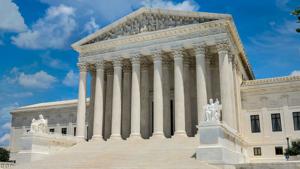
Supreme Court grants extra time for arguments in tariff case

WATCH: White House vows to ‘fight’ lawsuits over $100,000 H-1B visa fee
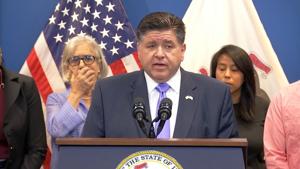
WATCH: Illinois leaders on both sides send Bailey family condolences for loss of 4
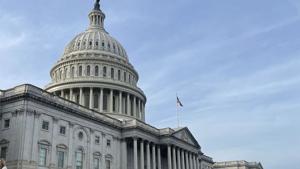
Democrats tank GOP bill to pay troops, essential workers during govt shutdown

Texas lawmaker introduces agricultural visa reform

Home sales rise 1.5% in September as mortgage rates dip

FBI arrests 34 in NBA, poker gambling probe involving crime families

Poll: Americans divided on Trump’s deportation, immigration policies
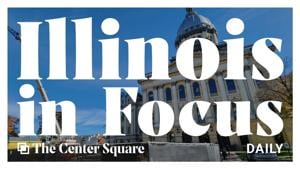
WATCH: Pritzker to sign exec. order to ‘pursue accountability’ amid federal deployments











